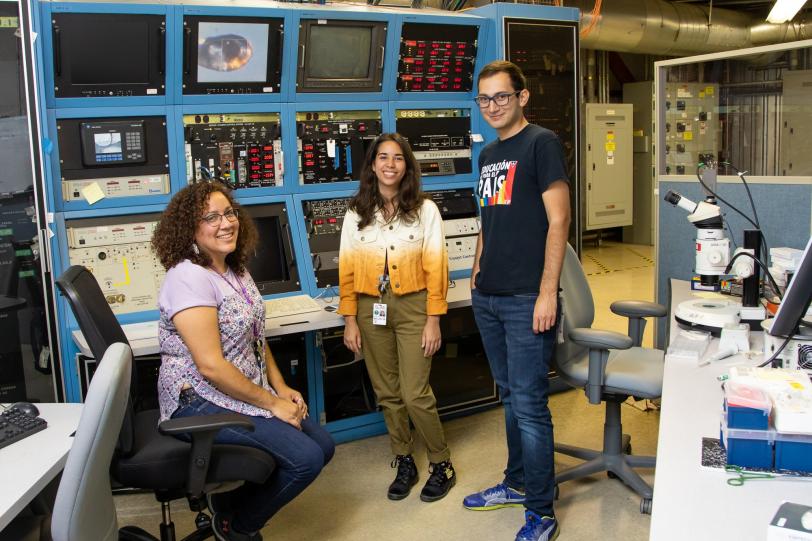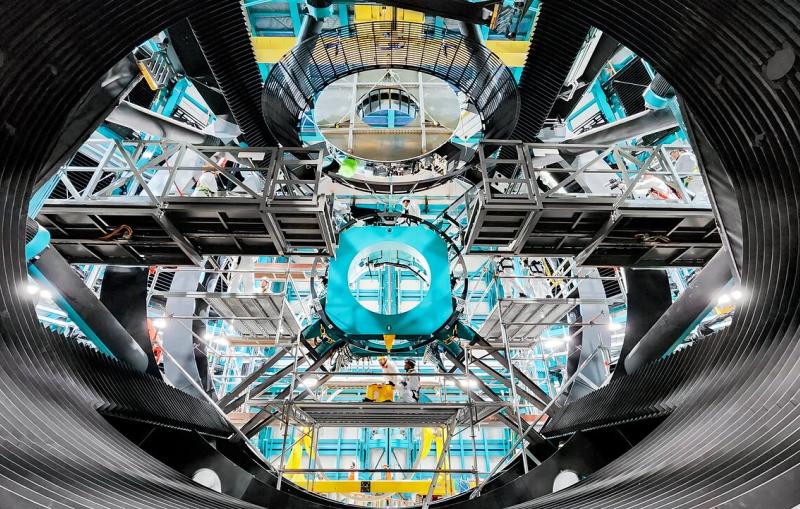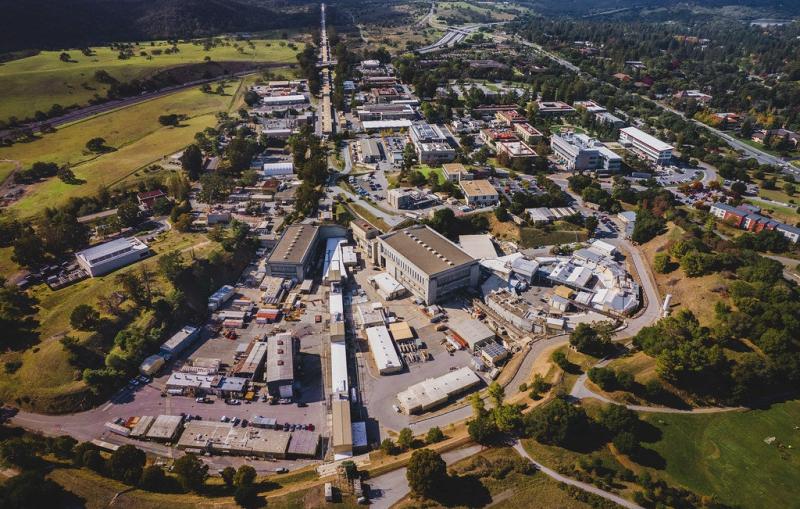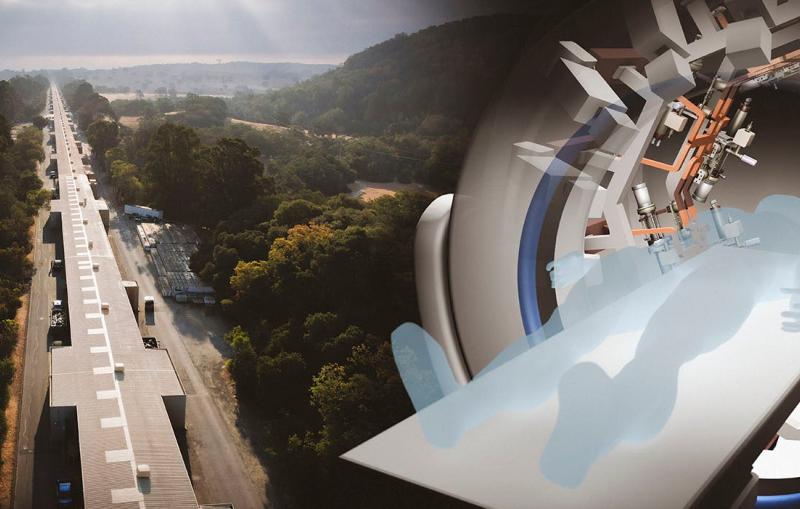Students affected by Hurricane Maria bring their research to SLAC
This summer, five graduate students from the University of Puerto Rico had the opportunity to use SLAC’s world-class facilities to keep their studies on track.
By Ali Sundermier
Darya Marchany-Rivera, a doctoral candidate at the University of Puerto Rico, has known she wanted to be a scientist since tenth grade when she competed in a NASA challenge to find ways to grow crystals in the microgravity environment of space. In 2015, she reaffirmed her love for crystallography when she and others from her university traveled to the Department of Energy’s SLAC National Accelerator Laboratory to take part in RapiData, a week long course organized by the Structural Molecular Biology Division of the Stanford Synchrotron Radiation Lightsource (SSRL) that provides lectures and hands-on training on crystallography.
Last fall, Marchany-Rivera and four other graduate students had the opportunity to return to SLAC as part of an internship program designed to give students affected by Hurricane Maria a chance to conduct research using the division’s user resources and cryogenic electron microscopy (cryo-EM) center. The internship program, funded by SSRL and the BioXFEL National Science Foundation Science and Technology Center, was spearheaded by SLAC scientist Aina Cohen with help from SLAC’s student program advisor Enrique Cuellar, BioXFEL director Edward Snell and BioXFEL Education and Diversity director Bill Bauer.
But when the students returned to Puerto Rico that winter, they faced lingering effects from the hurricane. “Buildings were condemned, laboratories were still without power and much of their equipment was destroyed,” Cuellar said.
Cuellar and Cohen wanted to provide the students with the space and facilities they needed to continue working on their projects. After Cuellar secured additional funding from work2future, a local nonprofit organization, the students were able to return to SLAC once again this summer.
“I think it's really good that these students have an internship requirement for their studies because often graduate students can be kind of isolated,” Cohen said. “It’s important to have students get out there, go to new places and meet people from different parts of the world. We are honored to be a part of this and are grateful for the opportunity to host them here at SLAC.”
Several of the students are working with researchers at Stanford’s Macromolecular Structure Knowledge Center (MSKC) to learn how to purify and grow protein crystals. Darya Marchany-Rivera has joined a collaboration with Mark Wilson of the University of Nebraska and SLAC scientist Henry van den Bedem, and will be involved in an upcoming experiment at SLAC’s Linac Coherent Light Source (LCLS).
“In addition to having access to world-class facilities, it’s important that the students also have the chance to work alongside scientists in their field and expand their connections,” Cohen said.
Probing nicotine addiction
At SLAC, Jose Del Toro-Dominguez, a master’s student and participant in the program, is studying a receptor in the brain related to nicotine addiction. It’s been shown that when nicotine binds to this protein, it can lead to a release of dopamine, creating an attachment to nicotine.
Dominguez is investigating the protein using cryo-EM with guidance from SLAC and Stanford professor Wah Chiu. After suspending the protein in solution and flash-freezing it, Del Toro-Dominguez hits the sample with a beam of electrons, which scatter in a pattern that he can use to see how the protein’s atoms are arranged in space.
“Through this research, I’m hoping to reach a better understanding of the shape of this protein,” Del Toro-Dominguez said. “This could inform the design of structure-based drugs that can either block or activate it, which has implications not just in treating addiction but also in neurodegenerative diseases like Alzheimer’s.”
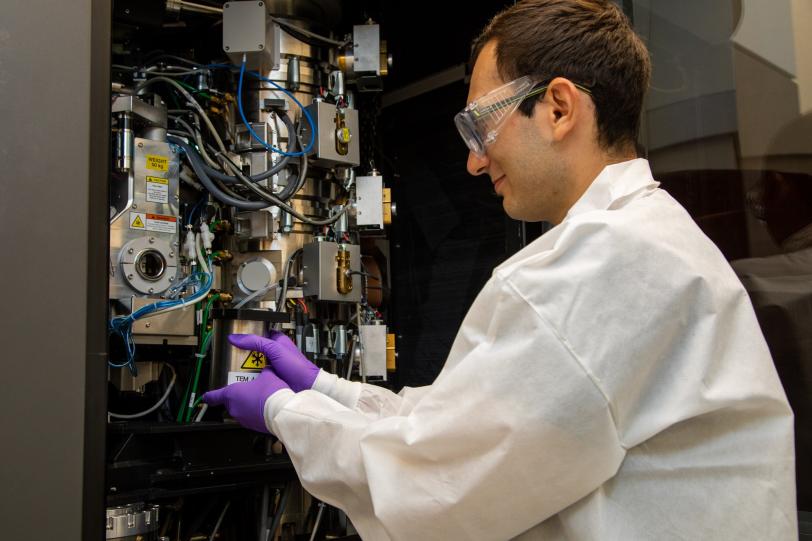
‘Threshold between good and bad’
Marchany-Rivera is studying the interaction of myoglobin, a protein that stores oxygen in muscle, with hydrogen sulfide, a flammable gas that was thought to be toxic to humans until researchers discovered that our bodies produce it in small concentrations.
“There’s a whole field in biomedicine dedicated to trying to understand how hydrogen sulfide is produced and how our bodies use it,” Marchany-Rivera said. “The threshold between good and bad is based on concentration: It’s been correlated to a lot of illnesses in high concentrations, but in low concentrations it can have therapeutic effects.”
To investigate this, Marchany-Rivera works with a class of proteins called hemeproteins, crystallizing them and studying their structure as they bond with hydrogen sulfide with a method called X-ray crystallography. After growing the crystals, Marchany-Rivera uses a micro-spectrometer to measure how the sample interacts with light, which allows her to identify the coordination of heme, an iron-containing compound, inside the protein. She then collides X-ray beams from SSRL into the crystals, using the patterns formed by the scattered X-rays to examine the structure of the protein as it reacts with hydrogen sulfide.
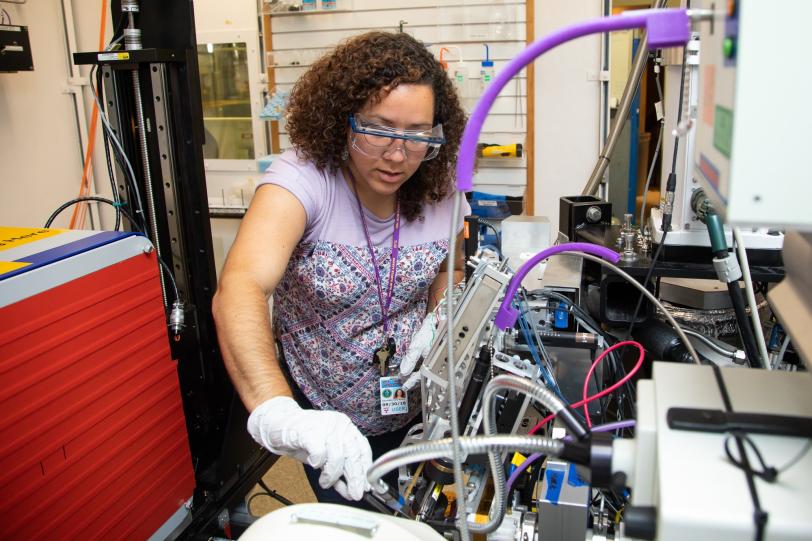
Hands-on experience
Keishla Sanchez-Ortiz, an undergraduate involved in this research at the University of Puerto Rico, also came to SLAC this summer under the DOE Office of Science-sponsored Science Undergraduate Laboratory Internships program. In collaboration with Cohen, SLAC scientist Silvia Russi and Danielle Fernandez of the MSKC, Marchany-Rivera and Sanchez-Ortiz are working to optimize how they grow the crystals and how they use SSRL to study them.
“The first time I walked around SSRL was kind of intimidating,” Sanchez-Ortiz said. “There are a lot of tubes and so many different sounds. It’s been an amazing experience learning how to use it. When you scoop out the crystals and you put them on the X-ray beam, you can see how the crystal moves and all the diffraction patterns produced and it’s really cool. It's something I never experienced before.”
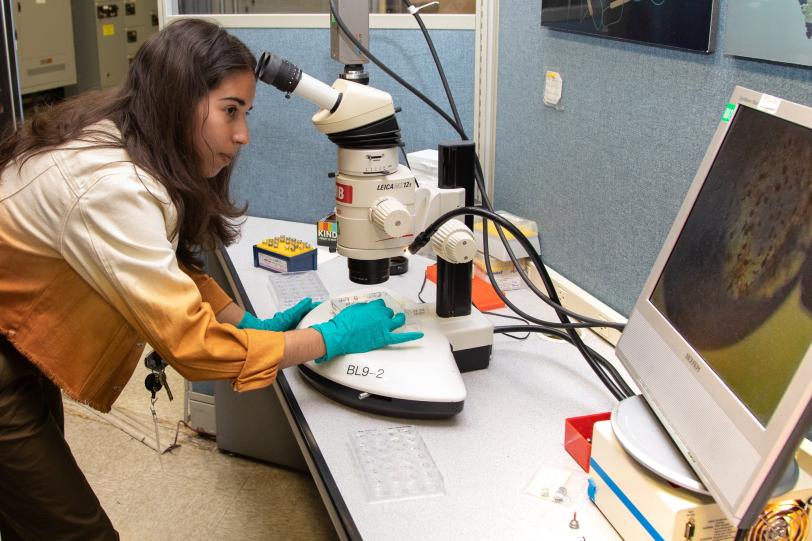
A ‘different world’
The effects of the hurricane were especially harmful to this research, Marchany-Rivera said, because the crystals they grow are extremely fragile, and have to be frozen so they can be sent to synchrotrons to collect data. Due to power outages, many of their samples were destroyed. At SLAC, they have more flexibility to refine their crystals because they can experiment with different ways of growing them and test them right away.
“It’s an entirely different world,” she said. “There are so many resources available to us that we don't have back home. Having access to the beamlines, which is the main technique of my project, helps me move my research forward and strike up collaborations with other people. I hope to become a staff scientist at a synchrotron facility one day, and this gives me a sense of what I can expect.”
SSRL and LCLS are DOE Office of Science user facilities.
For questions or comments, contact the SLAC Office of Communications at communications@slac.stanford.edu.
SLAC is a multi-program laboratory exploring frontier questions in photon science, astrophysics, particle physics and accelerator research. Located in Menlo Park, Calif., SLAC is operated by Stanford University for the U.S. Department of Energy's Office of Science.
SLAC National Accelerator Laboratory is supported by the Office of Science of the U.S. Department of Energy. The Office of Science is the single largest supporter of basic research in the physical sciences in the United States, and is working to address some of the most pressing challenges of our time. For more information, please visit science.energy.gov.
